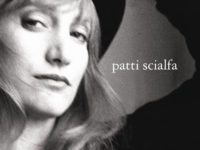Released on Sept. 11, 1973, Bruce Springsteen’s ‘The Wild, the Innocent and the E Street Shuffle’ actually pre-dates the band name. But the pieces were coming together: Danny Federici joined a lineup that already included Clarence Clemons and Garry Tallent. The results were commercially ignored – at least until Springsteen’s next album hit. This LP also included the lightly regarded “Wild Billy’s Circus Story.” Nevertheless, Mark Saleski calls it “one of rock’s perfect albums.” Here’s why:
“4TH OF JULY, ASBURY PARK (SANDY)”: Much of Bruce Springsteen’s early work was populated with large casts of characters and places, skillfully woven into the narrative. Heck, sometimes the people and places were the narrative. But even though Springsteen has admitted to putting together those songs with thesaurus in hand, the stories all managed to take shape – the reach toward adulthood of “Growin’ Up,” the delicious bad behavior of “Spirit in the Night.”
This is one of the attributes of Springsteen’s genius: to take a seemingly diffuse set of details and use them to form a singular image. In the case of “4th of July, Asbury Park (Sandy),” we have a pensive look back at what used to be, taken through a series of anecdotes connected by place and time. It’s a love letter both to Sandy and to a part of life that’s in the rearview mirror.
“WILD BILLY’S CIRCUS STORY”: There is a contingent of “fans” out there who label this song the “mistake” of The Wild, the Innocent and the E Street Shuffle. Since I think of the record as one of rock’s perfect albums, I must disagree. There’s something both romantic and sad about images of the big top.
The shows themselves can produce beauty and wonder, while the stories of the troupe have often centered on how the outcast and downtrodden run away to join the circus. The song, in true early Bruce Springsteen fashion, tosses out a big and colorful spate of characters. The music is at first a simple acoustic guitar, to which accordion, mandolin, harmonica, and tuba (as bass) are added. The tuba then switches to a more forward role, playing in unison with Springsteen’s vocals, coming in on one of my favorite lines: And now the elephants dance real funky and the band plays like a jungle fire.
Very much like “Sandy,” I came to think of this song as Danny Federici’s, as he played the accordion alongside Springsteen at the live shows. After Federici’s passing, Springsteen wrote the remembrance “The Last Carnival.” Released on Working on a Dream, and with the sad and powerful question “Where have you gone my handsome Billy?”, the two songs became linked. No, it was no mistake.
“INCIDENT ON 57th STREET”: Before “Born to Run,” before Mary was pondering a way out, and before we had to get out while we were still young, there was Puerto Rican Jane and Spanish Johnny. Two lovers, maybe going in different directions, though wishing that that wasn’t so. This is Springsteen at his early romantic best. The song is introduced with a lovely piano figure that leads into Springsteen tearing off a short guitar solo that hints at the trouble Johnny might be heading towards.
Spanish Johnny’s involved in a tough crowd, something that Jane is well aware of. But that doesn’t stop her from romancing the situation: “Jane moves over to share her pillow but opens her eyes to see Johnny up and putting his clothes on. She says, ‘Those romantic young boys, all they ever want to do is fight.‘” And off Johnny goes, as Springsteen rips into another guitar solo that dissolves into a circular piano figure …
“ROSALITA (COME OUT TONIGHT)”: … dissolves into a circular piano figure that leads into the rolling guitar riff that opens “Rosalita,” my favorite Bruce Springsteen song. Well, unless you ask me on the day that my favorite Springsteen song is “Thunder Road.” Really, I can never decide.
A rambling rave-up during which Springsteen wants to convince Rosie’s parents that maybe he’s not so bad after all, it’s one part Romeo and Juliet, one part romance, and a thousand parts crazed enthusiasm. Before “Thunder Road” came on my radar, “Rosalita” was the song that just had to be played before all important events: before leaving for vacation, before leaving for work on a Friday, before cracking open that first cold one on a Saturday night. Heck, it was even played right before my wedding.
Back when “Rosie” was a staple of nearly every E Street show, they played it with an intensity that approached the unhinged. And speaking of unhinged, the first show I went to (back on July 30, 1981) found Springsteen busting out a late-set “Rosalita” followed by a surprise appearance of Southside Johnny for “I Don’t Want To Go Home.” I almost lost my mind.
“NEW YORK CITY SERENADE”: Springsteen ends The Wild, the Innocent and the E Street Shuffle with another image-drenched epic. The song features the piano of David Sancious in full bloom accompanying Billy and Jackie down the dark and blue streets of a Manhattan night. There’s a story of redemption that might happen … and then it might not.
The combination of the story and the music puts my ear parts in a cinematic frame of mind. Sometimes, I think this sequence should have been flipped, with “Rosalita” closing out the record on a more rockin’ note. Years of listening have pushed that notion out of my head. Now the song feels almost like a foreshadowing of what’s to come, with stories that managed to be more compact and yet so full of vision.
- Why the Rolling Stones’ Harrowing ‘Gimme Shelter’ is Still Revealing New Depths - November 18, 2024
- How Talking Heads’ ‘Fear of Music’ Opened Up a World of Art and Sound - August 5, 2024
- How Deep Cuts Propelled Bruce Springsteen’s ‘Born in the U.S.A.’ - June 4, 2024


